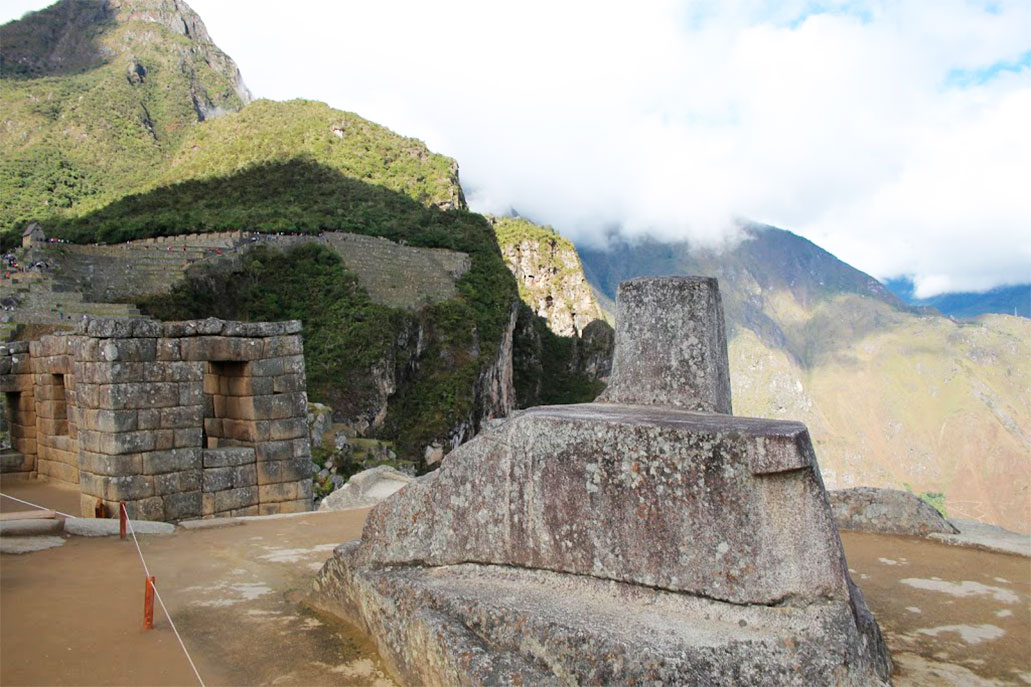The Intihuatana
The Intihuatana is one of the constructions of Machu Picchu that more visitors want to know. It is in the highest part of the religious sector, in the heart of the citadel. It is a solid monolith carved in three levels in such a way that when receiving the sun’s rays; its shadow indicates the time of sowing and harvesting in the place. Popular belief states that by putting your hands there, one is filled with the energies of the sun.

Content
The sundial
Intihuatana is a Quechua word that means ‘Where the sun is tied’. Its function was that of astronomical observation since the solar rays that fall on its structure indicate the position of the sun and, therefore, the correct time to carry out agricultural work. For all this it is also known as a ‘solar clock’.
This construction is located in the highest part of the religious sector of Machu Picchu, behind the Main Temple. It is accessed there through a short stone steps. The Intihuatana is a huge rock carved into three contiguous levels. The first a solid base, the second a finely carved space where the shadows of the third level fall: a four-sided cylinder that receives the sun’s rays directly.
The monolith that radiates energy
Due to its location at the top of the religious sector, several investigations suggest that the Intihuatana was the scene of rituals in honor of the sun, the main god of the Incas.
Today, due to the fact that the Intihuatana receives the sun’s rays directly, the popular belief states that placing the hand on this structure fills the person with energy.
Another structure that, according to the tour guides, radiates energy is the ‘Sacred Rock’ of Machu Picchu. That is why for many visitors visiting the Inca city is an opportunity to fill up with energy.

Hours of operation
Machu Picchu is open every day of the year from 6 in the morning to 5 in the afternoon. However, the Intihuatana can only be visited from 7 in the morning until 10 in the morning. Outside these hours it is not possible to visit it.
Other intihuatanas in Cusco
The main Inca citadels throughout Cusco have an ‘Intihuatana’. In addition to Machu Picchu, these are the archaeological sites where it is possible to appreciate these structures:
Qenqo – Above the underground labyrinths of this archaeological site there is a small stone formation on three levels which served as an astronomical calendar. In the Intihuatana of Qenqo religious rituals were also performed.
Pisac – In the religious sector of this archaeological site there is an immense Intihuatana, carved on a stone block that is surrounded by a kind of circular temple. This structure had a markedly religious purpose.
Ollantaytambo – In the religious sector of Ollantaytambo, on the structure of the famous Temple of the Sun, there is a small Intihuatana. It is believed to have been used as an astronomical observatory.
More information you should know
Currently, due to protection measures, it is not allowed to lay hands on the Intihuatana. Most people just put their hands up to this frame. It is believed that this is how you can feel the solar energy of this structure.
A part of the Intihuatana was damaged in 2000 when it was hit by a crane during the recordings of a commercial. Due to this, this structure is one of the most protected by the authorities of Machu Picchu.
The Intihuatana can be visited at the established time with any of the entrances to Machu Picchu.
In addition to the Intihuatana, there are other structures in Machu Picchu dedicated to the sun: the Intipunku (door of the sun) and the Temple of the sun. The star, called the god Inti, was the most important religious figure in the Inca worldview.